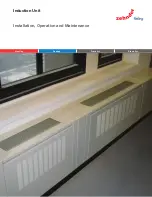
6
6
RQTV0129
LANG - 5
LANG - 4
FRANÇAIS
DANSK
ENGLISH
Step 2
- Placement of speaker
Speakers are designed identically so that no left or right
channel orientation is necessary.
You cannot take the front net off the speakers.
Use only the supplied speakers
• The combination of the main unit and speakers provide
the best sound. Using other speakers can damage the unit
and sound quality will be negatively affected.
• Set the speakers up on an even surface to prevent them
from falling. Take proper precautions to prevent the
speakers from falling if you cannot set them up on an even
surface.
Positioning for best effect
How you set up your speakers can affect the bass and the
sound field. Note the following points.
• Place speakers on flat secure bases.
• Placing speakers too close to floors, walls, and corners
can result in excessive bass. Cover walls and windows
with a thick curtain.
If irregular coloring occurs on your television
These speakers are designed to be used close to a television,
but the picture may be affected with some televisions and
set-up combinations.
If this occurs, turn the television off for about 30
minutes.
The television’s demagnetizing function should correct the
problem. If it persists, move the speakers further away from
the television.
Note:
• Keep your speakers at least 10mm away from the system
for proper ventilation.
• You can damage your speakers and shorten their useful
life if you play sound at high levels over extended periods.
• Reduce the volume in the following cases to avoid
damage.
− When playing distorted sound.
− When the speakers emit strange noise (howling) from a
microphone or record player, noise from FM broadcasts,
or continuous signals from an oscillator, test disc, or
electronic instrument.
− When adjusting the sound quality.
− When turning the unit on or off.
Caution
• Use the speakers only with the recommended
system. Failure to do so can damage the amplifier
and speakers, and can cause fire. Consult a qualified
service person if damage occurs or if a sudden
change in performance is apparent.
• Do not attach these speakers to walls or ceilings.
Step 3
- Inserting batteries into the remote control
AA/R6/LR6
■
Batteries
• Insert so the poles (+ and –) match
those in the remote control.
• Remove if the remote control is not
going to be used for a long period of
time. Store in a cool, dark place.
• Replace if the unit does not respond
to the remote control even when
held close to the front panel.
• Do not use rechargeable type
batteries.
• Mishandling of batteries in the
remote control can cause electrolyte
leakage, which may cause a fire.
• If electrolyte leaks from the
batteries, consult your dealer.
Wash thoroughly with water if
electrolyte comes in contact with
any part of your body.
Do not:
• mix old and new batteries.
• use different types at the same
time.
• heat or expose to flame.
• take apart or short circuit.
• attempt to recharge alkaline or
manganese batteries.
• use batteries if the covering has
been peeled off.
• put heavy objects on the remote
control.
• spill liquids onto the remote control.
■
Use
Aim at the remote control sensor,
avoiding obstacles, at a maximum
range of 7 m directly in front of the
unit.
Refer to page 8 for the remote
control sensor position.
Step 4
- DEMO function
■
STOP, –DEMO
When the unit is first plugged in, a demonstration of its functions may be shown
on the display.
If the demo setting is off, you can show a demonstration by selecting “DEMO
ON”.
Press and hold [
■
STOP, –DEMO].
The display changes each time the button is held down.
DEMO OFF
DEMO ON
While in standby mode, select “DEMO OFF” to reduce power consumption.
Note:
When the DEMO function is on, the Dimmer switches off automatically.
Getting started (continued)
RQTV0129-2G_1En.indd 6
2/9/06 4:24:24 PM







































